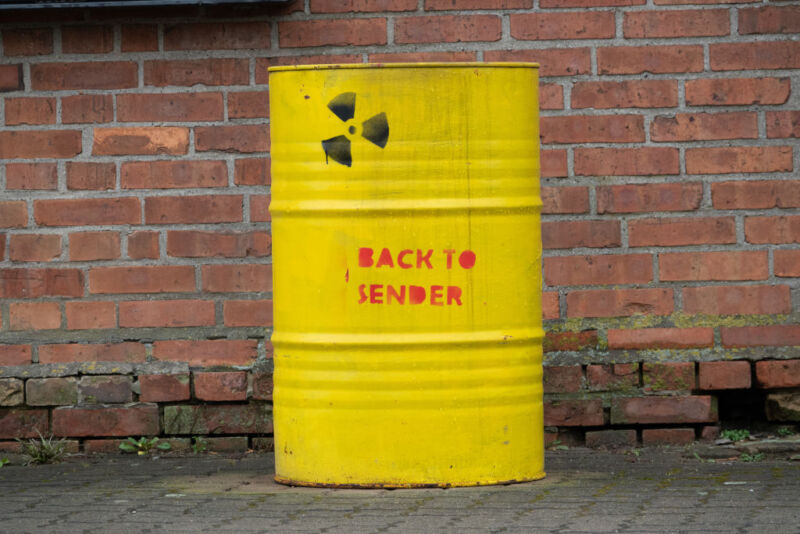
photo alliance | Getty Images
Lindsay Krall decided to study nuclear waste for a love of the mysterious. Figuring out how to bury radioactive atoms isn’t exactly easy — it requires a mix of particle physics, careful geology and engineering, and a high tolerance for stacks of regulations. But the trickiest ingredient of all is time. Nuclear waste from current reactors will take thousands of years to become something safer to process. So any solution cannot require too much stewardship. It just has to work and keep working for generations. By then, the company that splits those atoms will no longer exist, nor will the company that designed the reactor. Who knows? Perhaps the United States will not exist either.
At the moment, the US has no such plan. That’s been the case since 2011, when regulators faced with fierce local opposition pulled the plug on a decades-long effort to store trash under Nevada’s Yucca Mountain, with $44 billion in federal funds earmarked for the job. meant, stranded. Since then, the nuclear industry has been successful in temporarily storing its waste, which is partly why Congress has shown little interest in working out a solution for future generations. Long-term thinking is not their forte. “It’s a complete institutional failure in the US,” says Krall.

But there is a new type of nuclear energy on the market: the small modular reactor (SMR). For a long time, the US nuclear industry has been stagnant, largely because of the enormous cost of building huge new factories. SMRs, on the other hand, are small enough to be built in a factory and then transported elsewhere to produce power. Proponents hope this makes them more cost-effective than today’s large reactors, and provides an affordable, always-available complement to less predictable renewables like wind and solar. According to some, they should also produce less radioactive waste than their predecessors. A 2014 Department of Energy-sponsored report estimated that the U.S. nuclear industry would produce 94 percent less fuel waste if large, old reactors were replaced with new, smaller ones.
Krall was skeptical about that last part. “SMRs are generally marketed as a solution — you may not need a geological repository for them,” she says. So as a postdoctoral fellow at Stanford, she and two prominent nuclear experts began searching the patents, research papers, and license applications of two dozen proposed reactor designs, none of which have been built to date. Thousands of pages of redacted documents, a few requests for public records and a huge appendix full of calculations later, Krall, who is now a scientist at the Swedish nuclear waste company, got the answer: Through many measures, the SMR designs do not produce less, but potentially a lot. Lake waste: more than five times the spent nuclear fuel per unit of energy, and as much as 35 times for other forms of waste. The research was published earlier this week in the Proceedings of the National Academy of Sciences.
Startups seeking licenses to build SMR designs have disputed the findings, saying they are prepared for all the waste generated while the US arranges its permanent disposal. “Five times a small number is still a very small number,” said John Kotek, who leads policy and public affairs at the Nuclear Energy Institute, the industry’s trade association.
But the authors say the “back end” of the fuel cycle, which includes waste and decommissioning, should be a bigger factor in what they view as the precarious economics of the new reactors. “The purpose of this article is to spark a discussion,” said Allison Macfarlane, former chairman of the US Nuclear Regulatory Commission and co-author of the paper. “We can’t know how much it will cost until we understand what we’re dealing with.”
Designing smaller reactors may make them easier to build, but it also creates a problem: neutron leakage. Reactors produce energy by firing neutrons at uranium atoms, causing them to split. This emits more neutrons, which in turn find other targets and start a chain reaction. But some of these neutrons are missing. Instead, they fly out of the core and hit other parts of the reactor that become “activated” or radioactive. Within SMRs there is less room for the neutrons to crowd in, so more leaks. There is no way around the problem. “We’re actually dealing with gravity here, the laws of physics,” says Krall. “It’s something you have to work your way through.”

